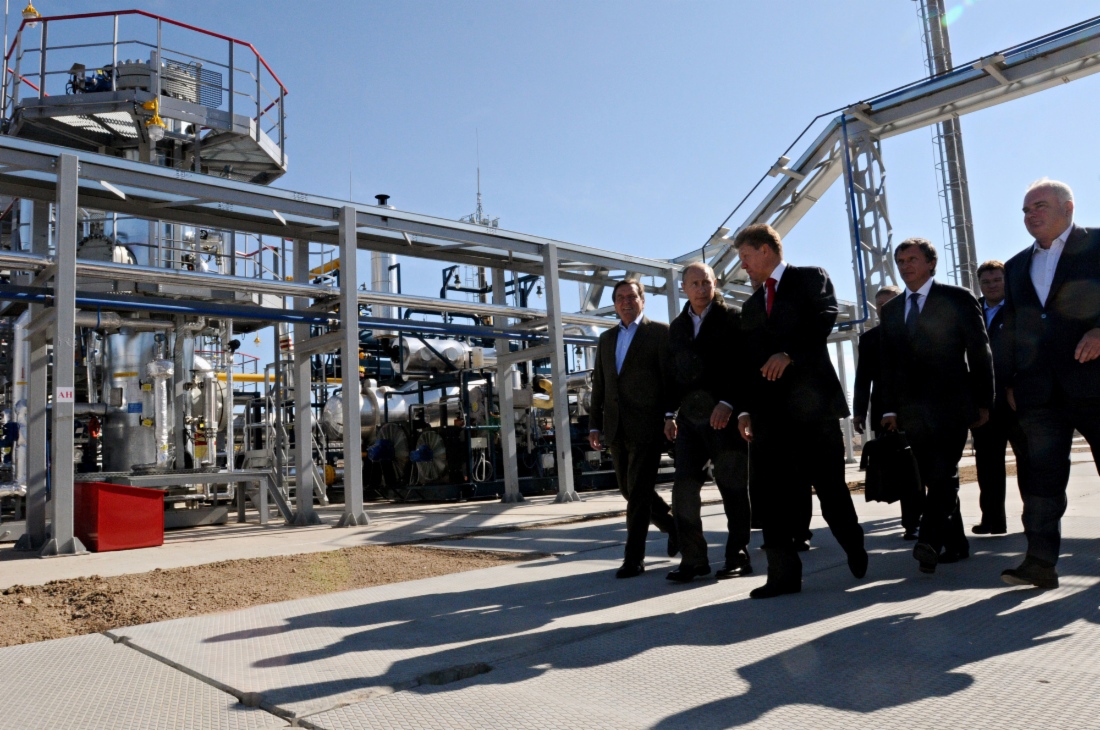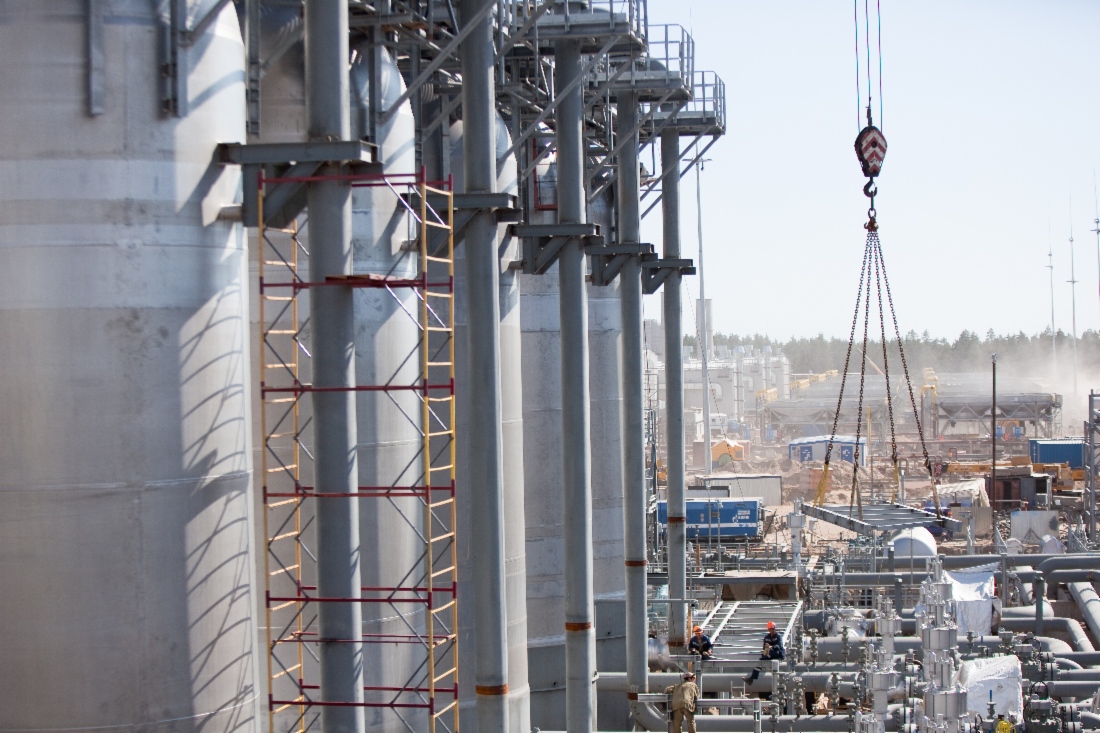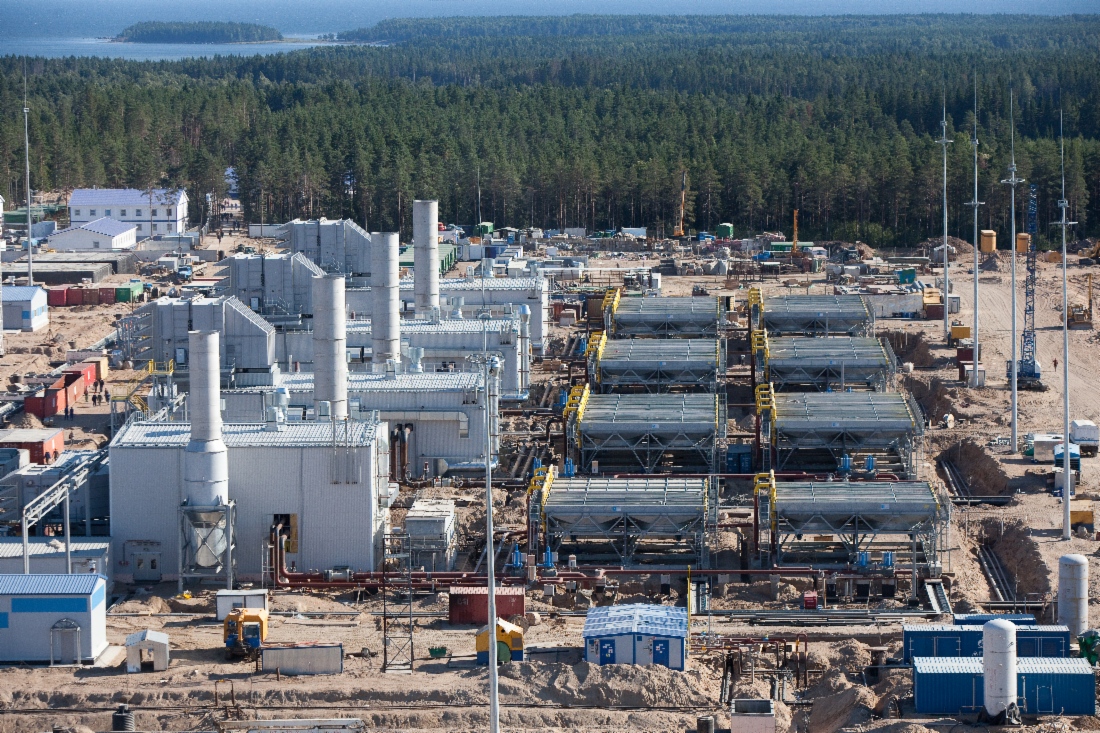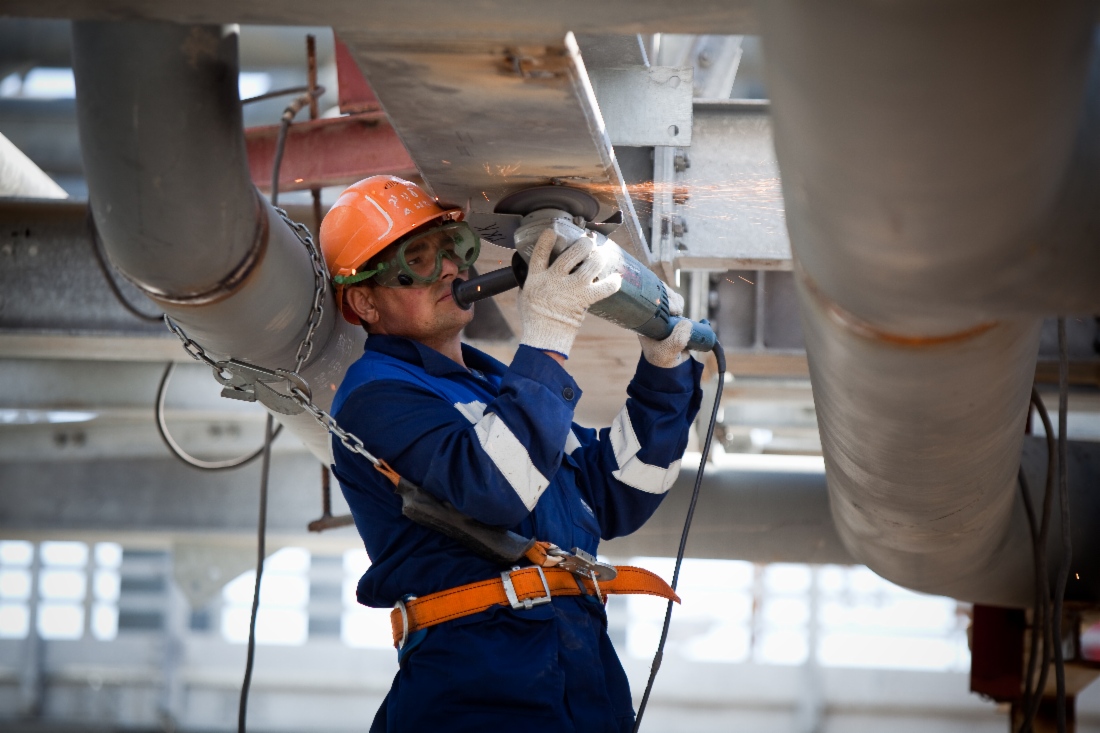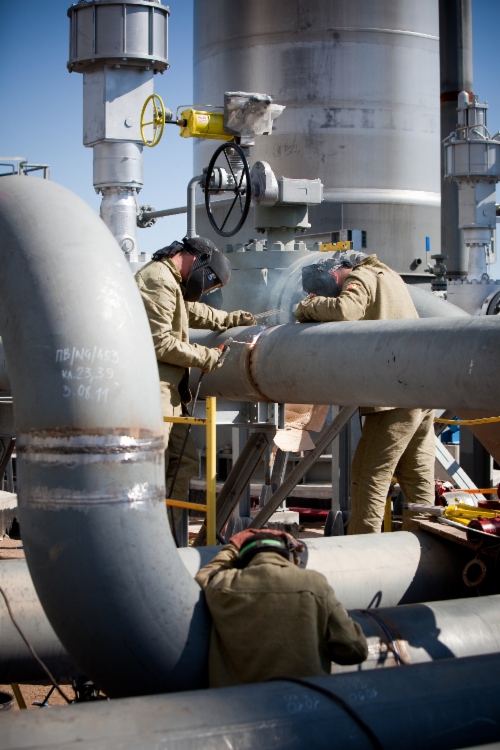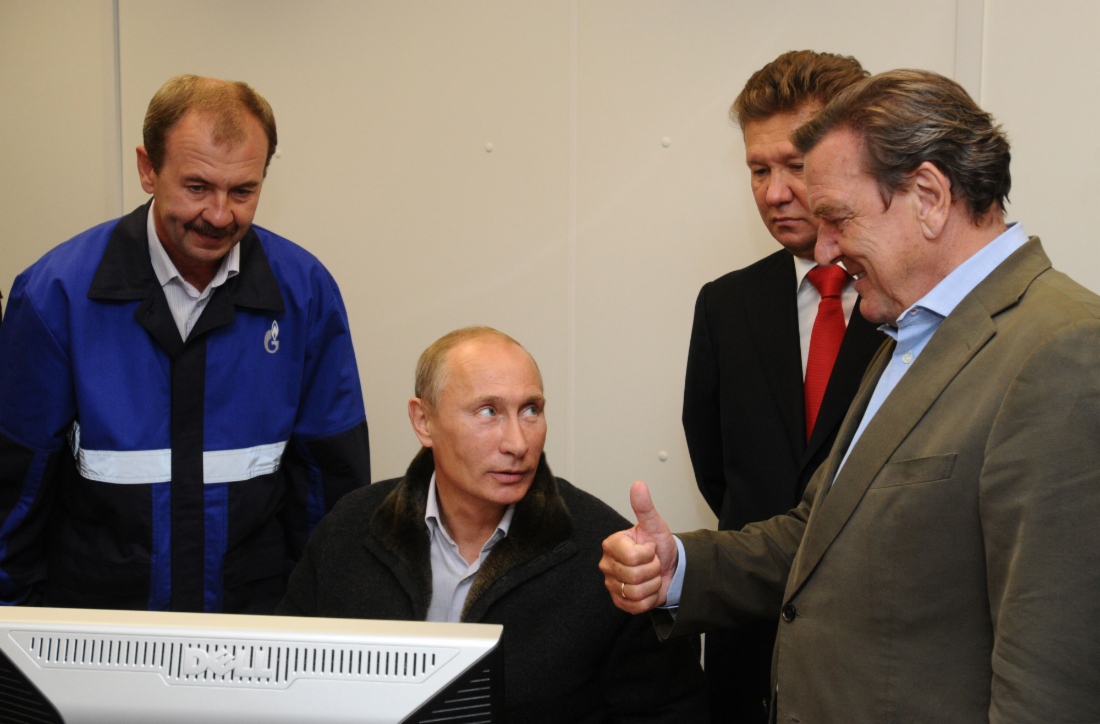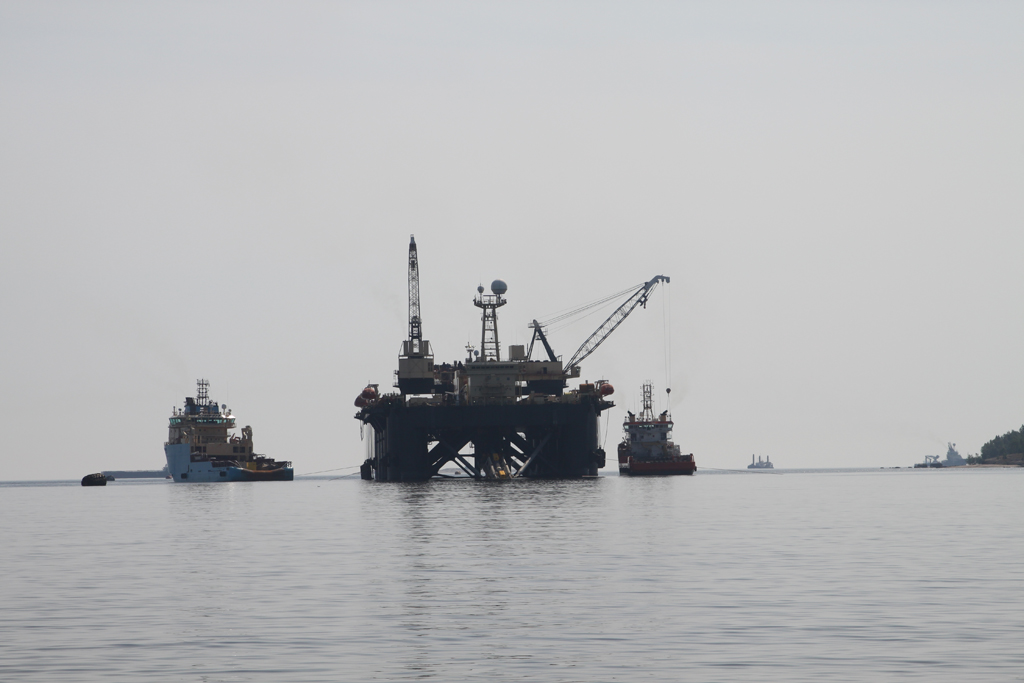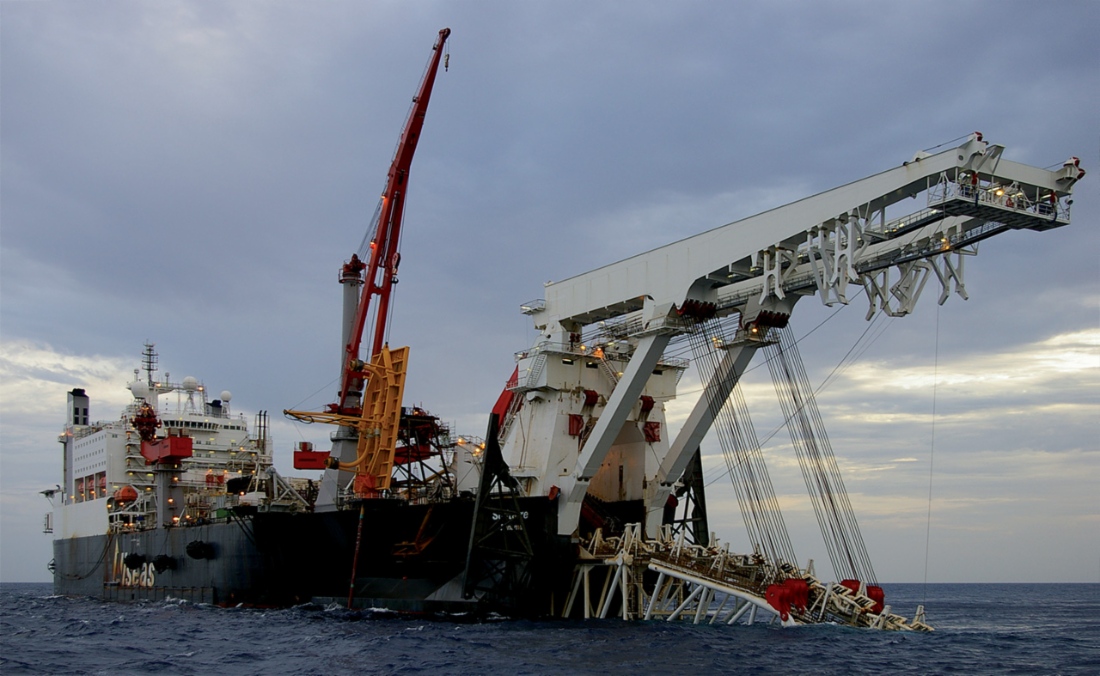Gas injected into Nord Stream
September 6, 2011
Gazprom started feeding natural gas into the first string of the Nord Stream gas pipeline. Celebrations dedicated to this important event took place at the Portovaya compressor station located near Vyborg (Leningrad Region).
Not just a dot on a map
By contrast with Moscow sludge, Saint Petersburg welcomed the ceremony participants with summer sun and fresh breeze – it seemed that even the treacherous Baltic weather favored the ongoing.
We are heading for Portovaya near Vyborg escorted by a Road Patrol Service car with a light bar, hoping that it will help make the three-hour bus ride at least a bit faster. Not all understand the significance of the hour. An old lady approached the delegation at the filling station and said: “And where are you driving at such speed, ahead of everyone? What’s the rush?” The farther from the Northern capital – the worse the road.
We turned off the highway. Not far from the compressor station our path runs near the Finnish border – there are two rows of barbed wire and a plough field near the country road.
Usually, gas pipelines are marked by lines on maps. Compressor stations look like dots on the routes of these lines. Portovaya is not just a dot on a map. It is a huge industrial facility which resembles a refinery by shape. And it is no coincidence, because the station equipment is mostly represented by gas dehydration and purification units. Most stringent requirements are imposed on the process as even the smallest admixture of water in the gas flow multiplied by the pumped volume and the gas trunkline length will lead to the hydrate plug formation and gas pipeline failure.
The Portovaya CS is still under construction. The first phase was put onstream in parallel with Nord Stream’s first string, the second stage will be ready by the time the second string comes onstream. Portovaya will become the world’s most powerful compressor station by then. Its record, however, will soon be beaten by the Russkaya compressor station that will be a starting point of another gas trunkline – South Stream The annual capacity of South Stream’s offshore section will amount to 63 billion cubic meters, while that of Nord Stream totals 55 billion cubic meters. However, as stated by Russian Deputy Prime Minister Igor Sechin on Tuesday, it’s possible that the third string of Nord Stream will be built. Therefore, the ‘socialist competition’ of the two streams may continue.
Simply with a click of a computer mouse
The symbolic launch of gas feeding into Nord Stream took place in the building with a dispatch and control unit for gas treated before injection into the offshore gas pipeline section. This small building is situated off-center the compressor station premises. It is from here that Russian Prime Minister Vladimir Putin personally launched gas feeding.
The facility was brought into operation not just by formally pressing a symbolic fake button in a conference room to the accompaniment of a shower of photoflashes, as it usually happens. This time the process may have looked not so spectacular, but everything was absolutely for real. The Prime Minister himself took a seat at the dispatcher’s computer and clicked a mouse button. “Here we go!” he said. The Gazprom Management Committee Chairman Alexey Miller affirmed that the control valve for gas feeding into the gas pipeline was activated by the mouse button click in the dispatch and control room. “The valve is open! Gas is being fed into Nord Stream,” Alexey Miller told the Prime Minister.
Besides Vladimir Putin, Igor Sechin and Alexey Miller, the ceremony was attended by Gerhard Schroeder, Chairman of the Nord Stream Shareholders’ Committee, Matthias Warnig, Nord Stream Managing Director and Georgy Poltavchenko, Saint Petersburg Governor.
A project of no easy fate
When talking to foreign colleagues after the ceremony, Vladimir Putin noted that the Nord Stream gas pipeline was ‘a huge ambitious project executed under difficult conditions’. And this complicated project became reality due to persistence, talent and professionalism of its participants. “The Nord Stream team comprises only 160 people, but they come from 23 countries! It’s a real big international group representing eminent German, Russian, Dutch and French companies. The target markets are Germany, France, the Netherlands, the UK and Denmark. This is an excellent project,” concluded the Prime Minister.
He stressed that a huge amount of money was allotted for studying the Baltic Sea bottom before the project start as well as for creating a constant control system. “Data is daily collected from 16 locations in thousands of points along the route. Reports are quarterly submitted to the environmental agencies in Russia, Germany, Sweden, Finland and Denmark,” Vladimir Putin mentioned.
The Prime Minister also pointed it out to the German representatives that the amount of gas supplied via the pipeline would be comparable to the power produced by 11 nuclear power plants – which was especially relevant in connection with the tragic events in Japan.
The project was implemented on a tight schedule – the 1,244 kilometer long gas pipeline was constructed within less than a year and a half. Over the same period 640 kilometers of the second string were constructed.
Indeed, it is still hard to believe that such an extensive, almost fantastic project is nearly completed. It would seem that the environmental approval process took place not long ago and politicians from different countries not involved in the project attacked it zealously. No wonder that now these failed transiters bypassed by Nord Stream assail Russia yet more violently. They are not satisfied with Russian gas prices, with transit rates.
Winding up the ceremony, Alexey Miller in his address to fellow gas workers said: “There were plenty of opponents – and we put their noses out of joint!” As for Vladimir Putin, speaking of the perennial question of gas transit via Ukraine, he mentioned: “Ukraine is our long-time partner, a traditional one. Just as any other transit country it has a temptation to take advantage of its exclusive transit position. Now this exclusiveness will be cancelled out. I think our relations will be getting more civilized in the market sphere.”
There will be gas!
The gas pipeline will be filled with process gas for about a month. In the German section it will displace nitrogen – an inert gas which serves as a kind of a ‘cushion’ between air and natural gas which was previously in the gas pipeline. This process gas will create the pipe pressure sufficient for natural gas to cover a long distance from Vyborg to Greifswald after the gas pipeline launch. It will happen very soon. And judging by the expressions of faces of both Russian project participants and their European partners, nobody has a slightest doubt about it now.


